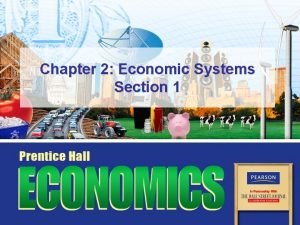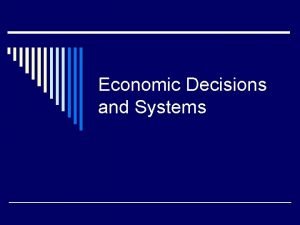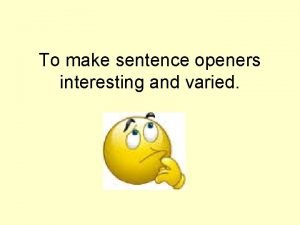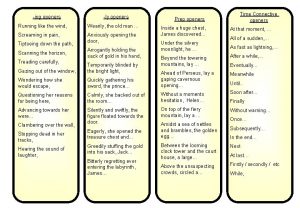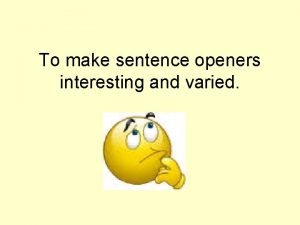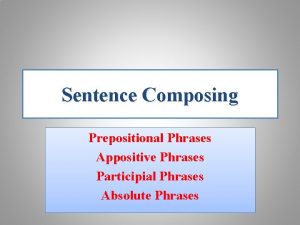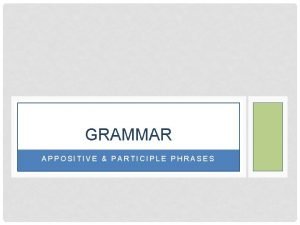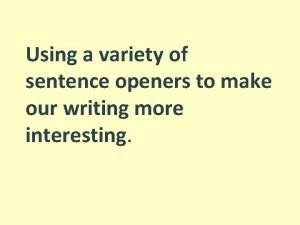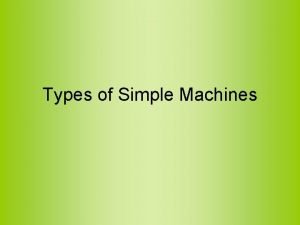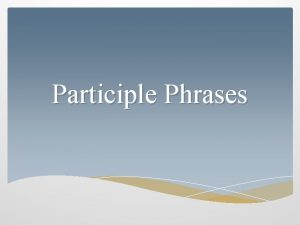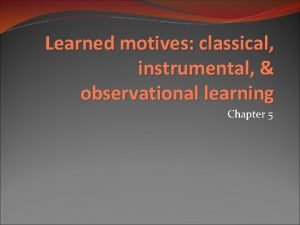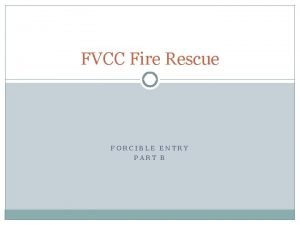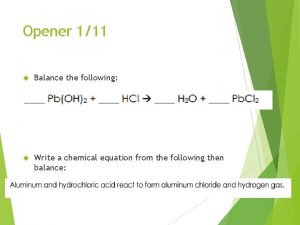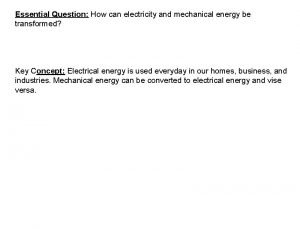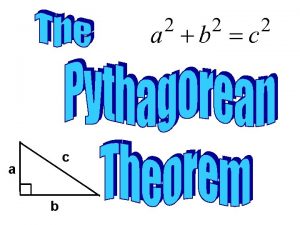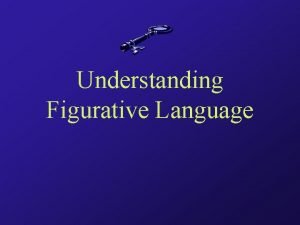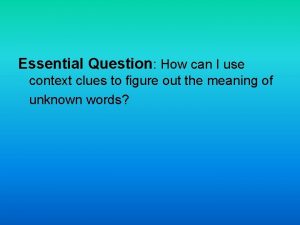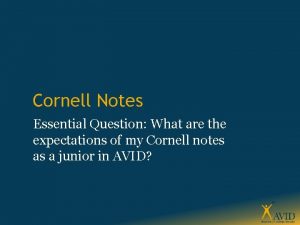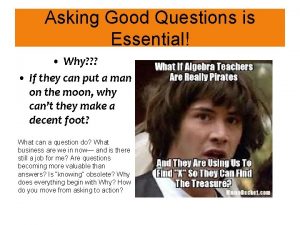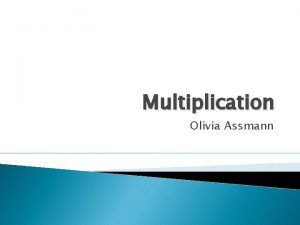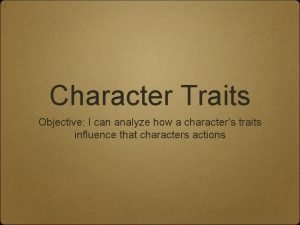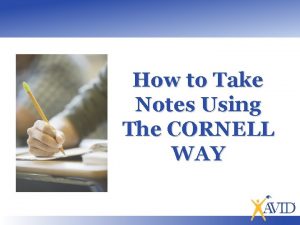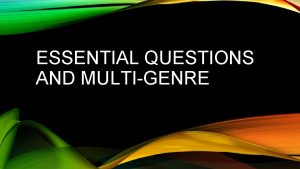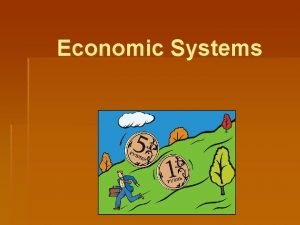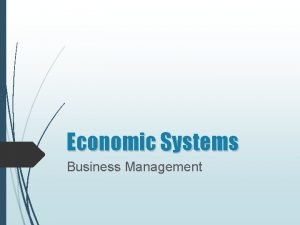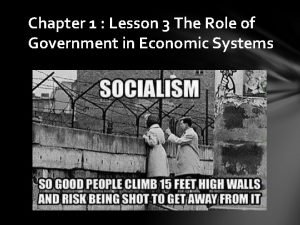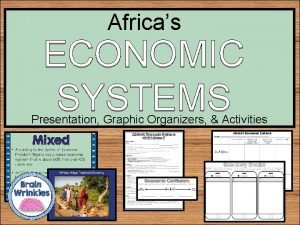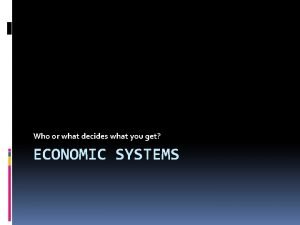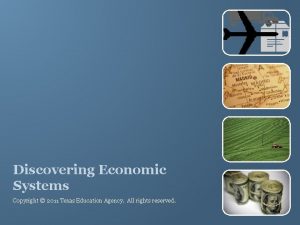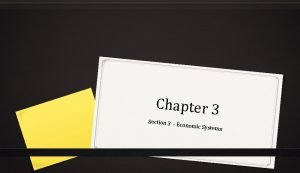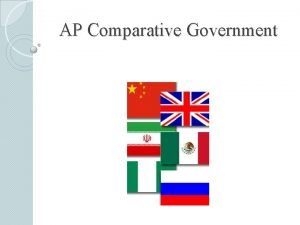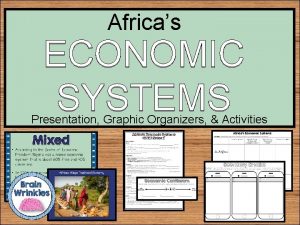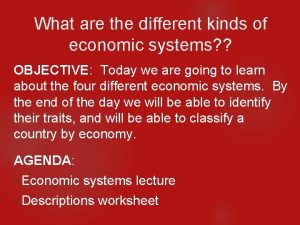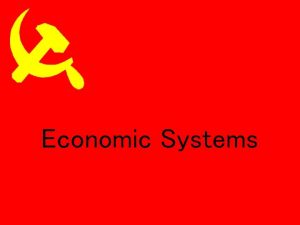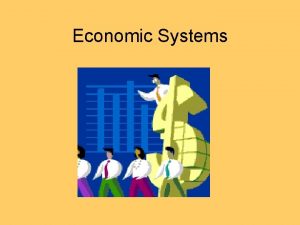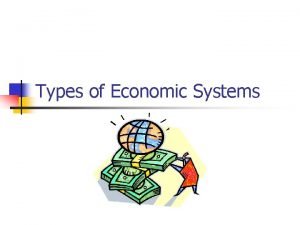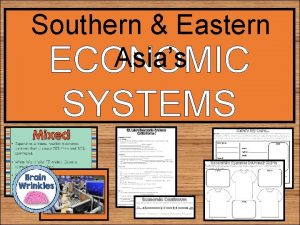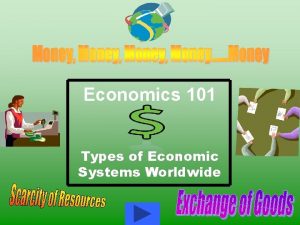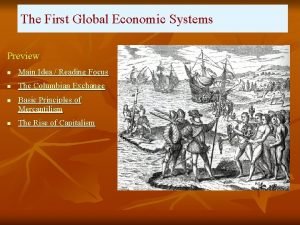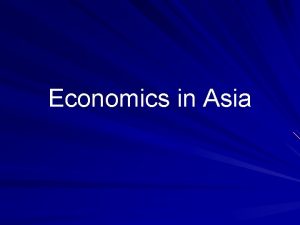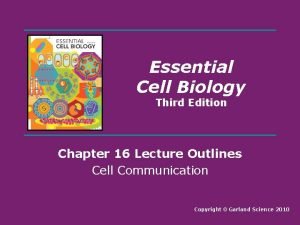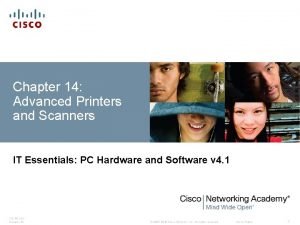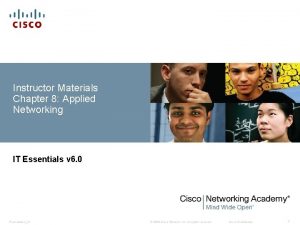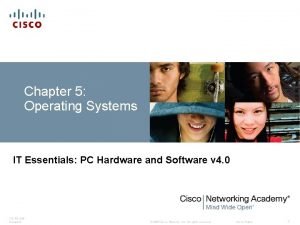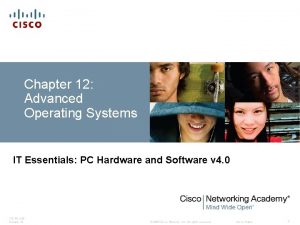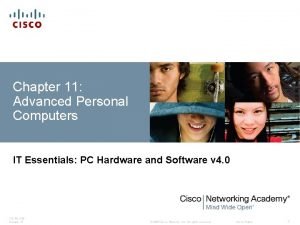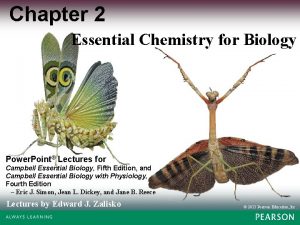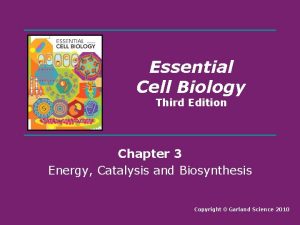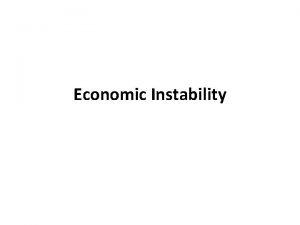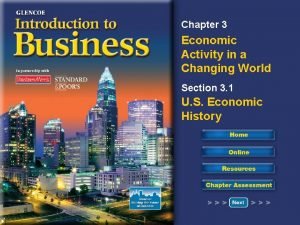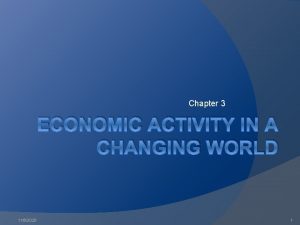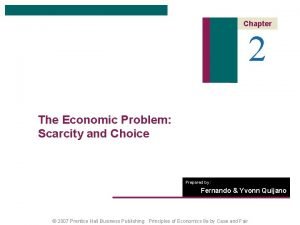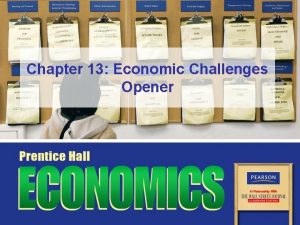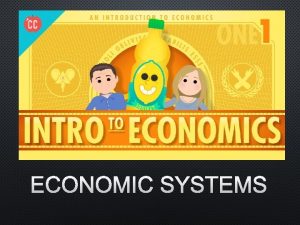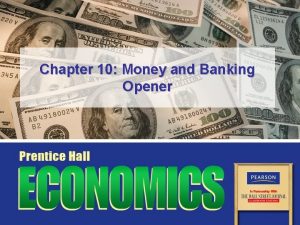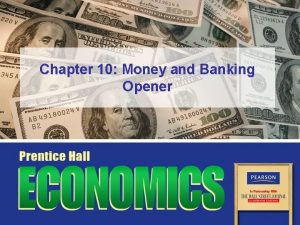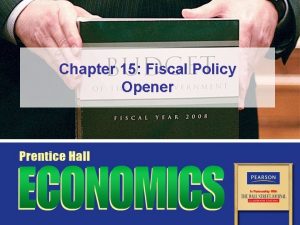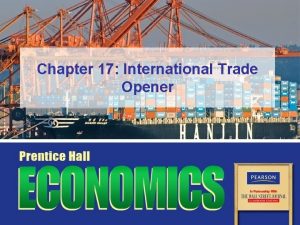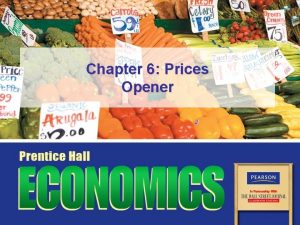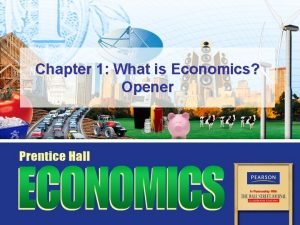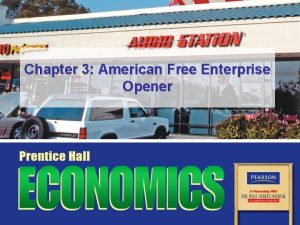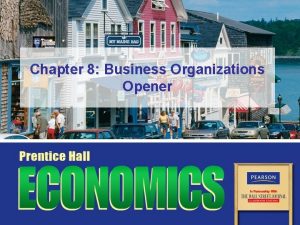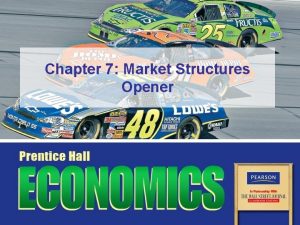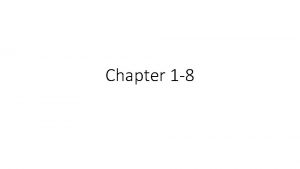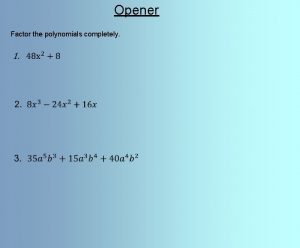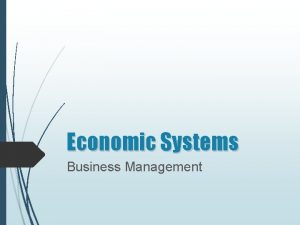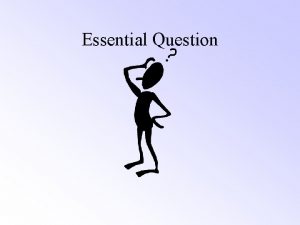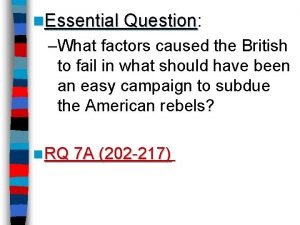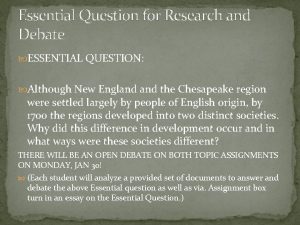Chapter 2 Economic Systems Opener Essential Question How






















































































- Slides: 86

Chapter 2: Economic Systems Opener

Essential Question • How does a society decide who gets what goods and services? Chapter 2, Opener Copyright © Pearson Education, Inc. Slide 2

Guiding Questions • Section 1: Answering the Three Economic Questions – What goals and values affect how a society answers the key economic questions? • The way in which a society addresses issues like economic efficiency, growth, freedom, security, and equity determines how it will answer the key economic questions. Chapter 2, Opener Copyright © Pearson Education, Inc. Slide 3

Guiding Questions • Section 2: The Free Market – What are the characteristics of a free market economy? • Free markets are characterized by economic freedom and the promotion of growth and stability. Chapter 2, Opener Copyright © Pearson Education, Inc. Slide 4

Guiding Questions • Section 3: Centrally Planned Economies – What are the characteristics of a centrally planned economy? • Centrally planned economies are characterized by government ownership of most or all of the economy. Chapter 2, Opener Copyright © Pearson Education, Inc. Slide 5

Guiding Questions • Section 4: Mixed Economies – What are the characteristics of a mixed economy? • Mixed economies are characterized by some government control and the free market system. Chapter 2, Opener Copyright © Pearson Education, Inc. Slide 6

Chapter 2: Economic Systems Section 1

Objectives 1. Identify the three key economic questions that all societies must answer. 2. Analyze the societal values that determine how a country answers the three economic questions. 3. Define the characteristics of a traditional economy. Chapter 2 Section 1 Copyright © Pearson Education, Inc. Slide 8

Key Terms • economic system: the structure of methods and principles that a society uses to produce and distribute goods and services • factor payment: the income people receive in return for supplying factors of production • profit: the amount of money a business receives in excess of expenses • safety net: a set of government programs that protect people who face unfavorable economic conditions Chapter 2 Section 1 Copyright © Pearson Education, Inc. Slide 9

Key Terms, cont. • standard of living: level of economic prosperity • innovation: the process of bringing new methods, products, or ideas into use • traditional economy: an economic system that relies on habit, custom, or ritual to decide three key economic questions Chapter 2 Section 1 Copyright © Pearson Education, Inc. Slide 10

Introduction • What goals and values affect how a society answers the key economic questions? – Each society is guided by its economic system, which affects the way in which it does business within the society itself and with other societies. – A society’s values, such as freedom or tradition, guide the type of economic system that society will have. Chapter 2 Section 1 Copyright © Pearson Education, Inc. Slide 11

Three Economic Questions • As a result of scarce resources, societies must answer three key economic questions: – What goods and services should be produced? – How should these goods and services be produced? – Who consumes these goods and services? • How a society answers these three questions defines the type of economic system that society has. Chapter 2 Section 1 Copyright © Pearson Education, Inc. Slide 12

Questions 1 and 2 • What goods and services should be produced? – Each society must decide what to produce in order to satisfy the needs and wants of its people. – Because resources are limited, each decision that a society makes about what to produce comes at an opportunity cost. • How should goods and services be produced? – As a society decides how to produce its goods and services, it must consider how best to use its land, labor, and capital. Chapter 2 Section 1 Copyright © Pearson Education, Inc. Slide 13

Combining Factor Resources Chapter 2 Section 1 Copyright © Pearson Education, Inc. Slide 14

Question 3 • Who consumes goods and services? – This question is largely determined by how societies distribute income. – Through factor payments, including profits, societies can determine who will be the consumers of the goods and services produced. Chapter 2 Section 1 Copyright © Pearson Education, Inc. Slide 15

Economic Efficiency • Societies answer the three economic questions based on the importance they attach to various economic goals. • Because resources are always scare, societies try to maximize what they can produce using the resources they have. – If a society can accurately assess what to produce, it increases economic efficiency. Chapter 2 Section 1 Copyright © Pearson Education, Inc. Slide 16

Economic Freedom and Security • Some societies limit the economic freedoms of its people. – In the United States, Americans face some limitations but, in general, we enjoy a large amount of economic freedom. • Economic systems also strive to achieve a certain degree of economic security. – Ideally, economic systems seek to reassure people that goods and services will be available when needed and they can count on receiving expected payments on time. Chapter 2 Section 1 Copyright © Pearson Education, Inc. Slide 17

Economic Equity • Economic equity is another economic goal that is defined differently in different societies. Each society must decide how to divide its economic pie. • Checkpoint: What are two examples of economic goals? Chapter 2 Section 1 Copyright © Pearson Education, Inc. Slide 18

Economic Growth • A society also strives for economic growth. A nation’s economy must grow so it can provide jobs for the new people joining the workforce. – A nation strives to improve its standards of living. – Innovation plays a huge role in economic success as well. Chapter 2 Section 1 Copyright © Pearson Education, Inc. Slide 19

Economic Goals in Conflict • There are some additional economic goals for certain societies, including environmental protection, full employment, and protecting national industries. • All societies must prioritize their economic goals, or arrange them in order of importance. Each choice comes with some kind of trade-off. Chapter 2 Section 1 Copyright © Pearson Education, Inc. Slide 20

Traditional Economies • The oldest and simplest economic system is known as a traditional economy. – Traditional economies rely on habit, custom, or ritual and revolve around the family. There is little room for innovation or change. Chapter 2 Section 1 Copyright © Pearson Education, Inc. Slide 21

Traditional Economies, cont. • Traditional economies are usually found in communities that tend to stay small and close. – Often members of these societies work to support the entire community, rather than just themselves or their immediate families. Chapter 2 Section 1 Copyright © Pearson Education, Inc. Slide 22

Traditional Economies, cont. • Societies with traditional economies are successful if they meet their own needs. – In many cases, these communities lack modern conveniences and have a relatively low standard of living. Chapter 2 Section 1 Copyright © Pearson Education, Inc. Slide 23

Review • Now that you have learned about the goals and values that affect how a society answers the key economic questions, go back and answer the Chapter Essential Question. – How does a society decide who gets what goods and services? Chapter 2 Section 1 Copyright © Pearson Education, Inc. Slide 24

Chapter 2: Economic Systems Section 2

Objectives 1. Explain why markets exist. 2. Analyze a circular flow model of a free market economy. 3. Describe the self-regulating nature of the marketplace. 4. Identify the advantages of a free market economy. Chapter 2, Section 2: Copyright © Pearson Education, Inc. Slide 26

Key Terms • market: any arrangement that allows buyers and sellers to exchange things • specialization: the concentration of the productive efforts of individuals and businesses on a limited number of activities • free market economy: an economic system in which decisions on the three key economic questions are based on the voluntary exchange in markets • household: a person or group living in a single residence Chapter 2, Section 2: Copyright © Pearson Education, Inc. Slide 27

Key Terms, cont. • firm: an organization that uses resources to produce a product or service, which it then sells • factor market: the arena of exchange in which firms purchase the factors of production from households • product market: the arena of exchange in which households purchase goods and services from firms • self-interest: an individual’s own personal gain Chapter 2, Section 2: Copyright © Pearson Education, Inc. Slide 28

Key Terms, cont. • incentive: the hope of reward or fear of penalty that encourages a person to behave a certain way • competition: the struggle among producers for the dollars of consumers • invisible hand: a term coined by Adam Smith to describe the self-regulating nature of the marketplace • consumer sovereignty: the powers of consumers to decide what gets produced Chapter 2, Section 2: Copyright © Pearson Education, Inc. Slide 29

Introduction • What are the characteristics of a free market economy? – A free market economy is characterized by: • • • Chapter 2, Section 2: Households and firms Factor and product markets Self-interest Competition Economic freedom, efficiency, and equity Copyright © Pearson Education, Inc. Slide 30

The Purpose of Markets • Checkpoint: Why do markets exist? – Markets, like a farmer’s market, a sporting goods store, and the New York Stock Exchange, eliminate the need for any one person to be self-sufficient. – Markets allow us to exchange things we have for the things we want. Chapter 2, Section 2: Copyright © Pearson Education, Inc. Slide 31

Specialization • Rather than being self-sufficient, each of us specializes in a few products or services. – Specialization leads to efficient use of land, labor, and capital. – Specialization allows businesses to focus on a limited number of related products or services. • Because of specialization, markets are needed to give people an arena with which to sell their products and to buy products that they don’t produce themselves but need. Chapter 2, Section 2: Copyright © Pearson Education, Inc. Slide 32

Free Market Economy • In a free market, answers to the three key economic questions are made by voluntary exchange in the marketplace. • Choices made by individuals determine what gets made, how it is made, and how much people can consume of the goods and services produced. • In a free market system, individuals and privately owned businesses own the factors of production. Chapter 2, Section 2: Copyright © Pearson Education, Inc. Slide 33

Circular Flow Model of a Market Economy Chapter 2, Section 2: Copyright © Pearson Education, Inc. Slide 34

Factor and Product Markets • In an arena of exchange known as the factor market, firms purchase factors of production, such as renting land, hiring and paying workers, and borrowing money, from households. • The arena in which households buy the goods and services that firms produce is called the product market. Chapter 2, Section 2: Copyright © Pearson Education, Inc. Slide 35

Self-Regulation • In The Wealth of Nations, Adam Smith observes that in the countless transactions that occur in the market, the buyer and seller consider only their self-interest. – Self-interest is the motivating force in the free market. – Consumers pursuing their self-interest have the incentive to look for lower prices. Chapter 2, Section 2: Copyright © Pearson Education, Inc. Slide 36

Self-Regulation, cont. • According to Smith, consumers will respond to the positive incentive of lower prices by buying more goods because spending less money on a good lowers the opportunity cost of the purchase. Chapter 2, Section 2: Copyright © Pearson Education, Inc. Slide 37

What are Incentives? Chapter 2, Section 2: Copyright © Pearson Education, Inc. Slide 38

Competition • Checkpoint: Why is competition important to the free market? – Firms seek to make higher profits by increasing sales. – Because of competition among other firms, however, increasing sales is not always possible. – Self-interest and competition work together to regulate the marketplace. – Smith called this self-regulating mechanism of the market “the invisible hand. ” Chapter 2, Section 2: Copyright © Pearson Education, Inc. Slide 39

Advantages of a Free Market • Under ideal conditions, free market economies meet the following economic goals: – They respond to rapidly changing conditions. – They have a large degree of economic freedom. – They encourage economic growth. – They lend themselves to consumer sovereignty. Chapter 2, Section 2: What free market principle does this cartoon illustrate? Copyright © Pearson Education, Inc. Slide 40

Advantages, cont. • Despite the advantages of a free market economy, no country today operates under a pure, unregulated free market. Chapter 2, Section 2: Copyright © Pearson Education, Inc. Slide 41

Review • Now that you have learned the characteristics of a free market economy, go back and answer the Chapter Essential Question. – How does a society decide who gets what goods and services? Chapter 2, Section 2: Copyright © Pearson Education, Inc. Slide 42

What are the Three Basic Questions? Chapter 2, Section 2: Copyright © Pearson Education, Inc. Slide 43

How does each answer the 3 questions? Free Market Chapter 2, Section 2: Command Economy Copyright © Pearson Education, Inc. Slide 44

Circular Flow Chapter 2, Section 2: Copyright © Pearson Education, Inc. Slide 45

Chapter 2: Economic Systems Section 3

Objectives 1. Describe how a centrally planned economy is organized. 2. Distinguish between socialism and communism. 3. Analyze the use of central planning in the Soviet Union and China. 4. Identify the disadvantages of a centrally planned economy. Chapter 2, Section 3 Copyright © Pearson Education, Inc. Slide 47

Key Terms • centrally planned economy: an economic system in which the government makes all decisions on the three key economic questions • command economy: another name for a centrally planned economy • socialism: a range of economic and political systems based on the belief that wealth should be distributed evenly throughout society Chapter 2, Section 3 Copyright © Pearson Education, Inc. Slide 48

Key Terms, cont. • communism: a political system in which the government owns and controls all resources and means of production and makes all economic decisions • authoritarian: describing a form of government which limits individual freedoms and requires strict obedience from their citizens Chapter 2, Section 3 Copyright © Pearson Education, Inc. Slide 49

Introduction • What are the characteristics of a centrally planned economy? – A centrally planned economy is characterized by: • Government answering the three economic questions • Government ownership of land, labor, and capital • Opposition to private property, free market pricing, competition, and consumer choice Chapter 2, Section 3 Copyright © Pearson Education, Inc. Slide 50

How Central Planning Works • Checkpoint: Who makes key decisions in a centrally planned economy? Chapter 2, Section 3 Copyright © Pearson Education, Inc. Slide 51

How Central Planning Works • Checkpoint: Who makes key decisions in a centrally planned economy? – In a centrally planned economy (also known as a command economy), the government, rather than individual producers and consumers, answer the key economic questions. • The government owns both land capital. • The government also controls where people work and what they are paid. Chapter 2, Section 3 Copyright © Pearson Education, Inc. Slide 52

Command v. Free Market • Command economies operate in direct contrast to free market systems. • Command economies oppose: – Private property – Free market pricing – Competition – Consumer choice Chapter 2, Section 3 Copyright © Pearson Education, Inc. Slide 53

Socialism • The term socialism describes a range of economic and political systems based on the belief that wealth should be evenly distributed throughout society. • Socialists argue that economic equity can only exist if the centers of economic power are controlled by the government or by the public as a whole, rather than by individuals or corporations. Chapter 2, Section 3 Copyright © Pearson Education, Inc. Slide 54

Market Socialism • In some nations, like Sweden, socialism coexists with free market practices. • This is known as “market socialism. ” – Under this system the government uses its powers of taxation to redistribute wealth and provide extensive services. Chapter 2, Section 3 Copyright © Pearson Education, Inc. Slide 55

Communism • Checkpoint: What beliefs did Karl Marx hold about capitalism? – Under communism, the central government owns and controls all resources and means of production. • Communism derived from the writings of Karl Marx who believed that labor was the source of all value but that under capitalism, all the profit created by laborers ended up in the hands of the property owners. • The inevitable cost of capitalism according to Marx was the exploitation of workers and an unfair distribution of wealth. Chapter 2, Section 3 Copyright © Pearson Education, Inc. Slide 56

The Soviet Union • The Soviet Union became the world’s first communist state in 1917 and remained so until it broke up in 1991. – Soviet economic planners sought to build power and prestige and allocated the best land, labor, and capital to heavy industry. – This decision had a harsh effect on factories that made consumer goods. Chapter 2, Section 3 Copyright © Pearson Education, Inc. Slide 57

The Soviet Union, cont. • Shortages were a recurring problem in the Soviet Union. Consumers would often wait in long lines at stores, only to discover that there was nothing to buy. Chapter 2, Section 3 Copyright © Pearson Education, Inc. Slide 58

What are the Three Basic Questions? Chapter 2, Section 3 Copyright © Pearson Education, Inc. Slide 59

How does each answer the 3 questions? Free Market Chapter 2, Section 3 Command Economy Copyright © Pearson Education, Inc. Slide 60

Circular Flow Chapter 2, Section 3 Copyright © Pearson Education, Inc. Slide 61

China • Government planners controlled every aspect of the Chinese economy from 1949 until the late 1970 s. – The government initially tried to keep some of the farmland private but by the 1950 s, the government forced many peasants onto farming communities. – This caused farm production to drop sharply. – Facing shortages, the government eased its control over the communes. Chapter 2, Section 3 Copyright © Pearson Education, Inc. Slide 62

China, cont. • By the 1970 s, China gave more farmland to private owners. • Today, China allows more economic freedom than in the past, which has given China’s economy a huge boost. Chapter 2, Section 3 Copyright © Pearson Education, Inc. Slide 63

Disadvantages • Nations with command economies often have trouble meeting the basic economic goals. – The complex bureaucracy of a command economy is not efficiently run and does not adjust quickly to market changes. – There is minimal, if any, economic freedom. – Innovation is not rewarded and thus economic growth is stilted. – There is no economic equity. • However, command economies do guarantee jobs and income and can be used to jump-start selected industries. Chapter 2, Section 3 Copyright © Pearson Education, Inc. Slide 64

Review • Now that you have learned the characteristics of a centrally planned economy, go back and answer the Chapter Essential Question. – How does a society decide who gets what goods and services? Chapter 2, Section 3 Copyright © Pearson Education, Inc. Slide 65

Chapter 2: Economic Systems Section 4

Compare and Contrast Traditional Economy Chapter 2, Section 4 Market Economy Copyright © Pearson Education, Inc. Command Economy Slide 67

Objectives 1. Explain the rise of mixed economic systems. 2. Interpret a circular flow model of a mixed economy. 3. Compare the mixed economies of various nations along a continuum between centrally planned and free market systems. 4. Describe the role of free enterprise in the United States economy. Chapter 2, Section 4 Copyright © Pearson Education, Inc. Slide 68

Key Terms • laissez faire: the doctrine that government generally should not intervene in the marketplace • private property: property that is owned by individuals or companies, not by the government or people as a whole • mixed economy: a market-based economic system in which the government is involved to some extent Chapter 2, Section 4 Copyright © Pearson Education, Inc. Slide 69

Key Terms, cont. • economic transition: a period of change in which a nation moves from one economic system to another • privatization: the process of selling businesses or services operated by the government to individual investors, and then allowing them to compete in the marketplace • free enterprise system: an economic system in which investments in firms are made in a free market by private decision rather than by state control Chapter 2, Section 4 Copyright © Pearson Education, Inc. Slide 70

Introduction • What are the characteristics of a mixed economy? – A mixed economy is characterized by: • A market-based economy with some government intervention • Government helps societies meet needs that would be too difficult for them to meet under a totally free market economy, such as education • Government protects property rights and ensures that exchanges in the marketplace are fair Chapter 2, Section 4 Copyright © Pearson Education, Inc. Slide 71

The Rise of Free Markets • Even free market thinkers like Adam Smith recognized the need for a limited degree of government involvement in the economic marketplace. • In a mixed economy, the market is free but has a certain degree of government control. Chapter 2, Section 4 Copyright © Pearson Education, Inc. Slide 72

The Rise of Free Markets, cont. – Checkpoint: What is one reason the government plays a role in the economy? – The government: • Provides national defense and public education • Protects private property • Ensures fair exchanges in the marketplace Chapter 2, Section 4 Copyright © Pearson Education, Inc. Slide 73

Circular Flow Model of a Mixed Economy Chapter 2, Section 4 Copyright © Pearson Education, Inc. Slide 74

Government in the Market • Governments buy labor in the factor market to have employees help run its programs. • Governments purchase goods and services from firms in the product market. • Governments also collect taxes from both households and firms. – Checkpoint: How are governments involved in the product market? Chapter 2, Section 4 Copyright © Pearson Education, Inc. Slide 75

Comparing Mixed Economies • Most modern economies are mixed economies. – The figure below shows a continuum of mixed economics in today’s world. – Why is China a little bit farther to the right on the diagram below than Cuba? Chapter 2, Section 4 Copyright © Pearson Education, Inc. Slide 76

North Korea and China • North Korea represents one extreme of the continuum. – North Korea’s economy is almost totally dominated by the government. The government owns all the property and output equipment. • China, on the other hand, is closer to the center of the continuum because China is going through an economic transition toward privatization of state-owned firms. Chapter 2, Section 4 Copyright © Pearson Education, Inc. Slide 77

Hong Kong • Hong Kong represents one of the world’s freest markets. – In Hong Kong, the private sector rules. – The government protects private property and rarely interferes in the free market, aside from establishing wage and price controls on rent and some public services. Chapter 2, Section 4 Copyright © Pearson Education, Inc. Slide 78

The United States • The United States is a mixed economy whose foundation is the free market. • It is characterized as a free enterprise system. Chapter 2, Section 4 Copyright © Pearson Education, Inc. Slide 79

Government Intervention • The American government intervenes in the economy by: – Keeping order – Providing vital services – Promoting general welfare • Federal and state laws protect private property. – The marketplace operates with a limited degree of government regulation. Chapter 2, Section 4 Copyright © Pearson Education, Inc. Slide 80

American Economic Freedom • The United States enjoys a high level of economic freedom. – Foreign investment and free trade is encouraged – The banking industry operates under relatively few restrictions – Foreign-owned banks have few additional restrictions Chapter 2, Section 4 Copyright © Pearson Education, Inc. Slide 81

Review • Now that you have learned the characteristics of a mixed economy, go back and answer the Chapter Essential Question. – How does a society decide who gets what goods and services? Chapter 2, Section 4 Copyright © Pearson Education, Inc. Slide 82

Chapter 2, Section 4 Copyright © Pearson Education, Inc. Slide 83

Chapter 2, Section 4 Copyright © Pearson Education, Inc. Slide 84

Chapter 2, Section 4 Copyright © Pearson Education, Inc. Slide 85

Chapter 2, Section 4 Copyright © Pearson Education, Inc. Slide 86
 Economic systems lesson 2 our economic choices
Economic systems lesson 2 our economic choices Costa level 2 questions examples
Costa level 2 questions examples Characteristics of lipids
Characteristics of lipids Chapter 2 economic systems and decision making answer key
Chapter 2 economic systems and decision making answer key Chapter 2 economic systems answer key
Chapter 2 economic systems answer key Chapter 2 economic systems and decision making
Chapter 2 economic systems and decision making Chapter 2 economic systems and decision making
Chapter 2 economic systems and decision making Chapter 1 economic decisions and systems answer key
Chapter 1 economic decisions and systems answer key Chapter 2 economic resources and systems
Chapter 2 economic resources and systems Adverbs openers
Adverbs openers Appositive list
Appositive list Good ing openers
Good ing openers Adverb openers
Adverb openers Prepositional phrase opener
Prepositional phrase opener Appositive phrase and participial
Appositive phrase and participial Rfi filter for garage door opener
Rfi filter for garage door opener Sentence openers
Sentence openers Wheelbarrow bottle opener simple machine
Wheelbarrow bottle opener simple machine What's a participle
What's a participle Learned motives
Learned motives Rescue forcible entry tools door opener
Rescue forcible entry tools door opener Balance opener
Balance opener Ispace openers examples
Ispace openers examples Residential garage door installation in edmonton
Residential garage door installation in edmonton Figurative language essential questions
Figurative language essential questions Formula hipotenusa triangle rectangle
Formula hipotenusa triangle rectangle Essential question generator
Essential question generator Pythagorean theorem essential questions
Pythagorean theorem essential questions Essential questions for figurative language
Essential questions for figurative language Essential question about identity
Essential question about identity Context clues of essential
Context clues of essential Cornell notes essential question
Cornell notes essential question Essential questions definition
Essential questions definition Essential questions for multiplication
Essential questions for multiplication Essential question gif
Essential question gif Internal and external character traits
Internal and external character traits The cornell way
The cornell way Essential questions poetry
Essential questions poetry Economic growth vs economic development
Economic growth vs economic development What is economic growth and development
What is economic growth and development Economic question answer
Economic question answer Africa's economic systems comprehension check answer key
Africa's economic systems comprehension check answer key What is the purpose of an economic system
What is the purpose of an economic system Pure command system
Pure command system How many economic systems are there
How many economic systems are there Economic systems cartoon
Economic systems cartoon Lesson 3 the role of government in economic systems
Lesson 3 the role of government in economic systems Africa's economic systems cloze notes 1
Africa's economic systems cloze notes 1 Who or what decides what you get
Who or what decides what you get Free enterprise and other economic systems
Free enterprise and other economic systems Discovering economic systems comparative worksheet answers
Discovering economic systems comparative worksheet answers The three economic systems
The three economic systems Economic systems
Economic systems Africa's economic systems cloze notes 1
Africa's economic systems cloze notes 1 Pros of traditional economy
Pros of traditional economy Why do we have economic systems
Why do we have economic systems Command economy example
Command economy example Command economy
Command economy Se asian economies comprehension check answer key
Se asian economies comprehension check answer key Types of economic systems
Types of economic systems The first global economic systems
The first global economic systems What do economic systems seek to do?
What do economic systems seek to do? Present simple question words
Present simple question words Advantages and disadvantages of probing questions
Advantages and disadvantages of probing questions Contoh open question dan close question
Contoh open question dan close question Factor-relating
Factor-relating Direct vs indirect question
Direct vs indirect question Compelling question example
Compelling question example Compelling question vs supporting question
Compelling question vs supporting question Essential cell biology chapter 3 quiz
Essential cell biology chapter 3 quiz It essential chapter 14
It essential chapter 14 It essentials chapter 8
It essentials chapter 8 It essential chapter 5
It essential chapter 5 It essentials chapter 5
It essentials chapter 5 It essentials chapter 12
It essentials chapter 12 It essentials chapter 9
It essentials chapter 9 It essentials chapter 11
It essentials chapter 11 Cl na
Cl na Essential cell biology third edition
Essential cell biology third edition Decision support systems and intelligent systems
Decision support systems and intelligent systems Principles of complex systems for systems engineering
Principles of complex systems for systems engineering Embedded systems vs cyber physical systems
Embedded systems vs cyber physical systems Engineering elegant systems: theory of systems engineering
Engineering elegant systems: theory of systems engineering Economics chapter 13 vocabulary
Economics chapter 13 vocabulary Chapter 3 economic activity in a changing world
Chapter 3 economic activity in a changing world Chapter 3 economic activity in a changing world
Chapter 3 economic activity in a changing world Chapter 2 the economic problem: scarcity and choice
Chapter 2 the economic problem: scarcity and choice




